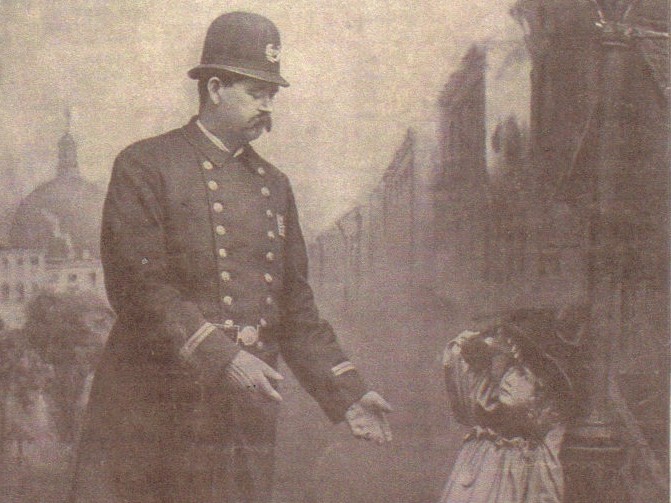Today in 1981, the premiere of MTV.
This cable channel dedicated to videos from the biggest names in pop and rock music changed the music industry forever (or at least until they switched over to mostly reality shows).
But while MTV did make music videos mainstream in its heyday, it didn’t invent the genre.
In fact, you could argue there were proto-music videos like a century before MTV.
Performers in the late 1800s experimented with visual components like projected slides to accompany singing.
In the mid 1890s, songwriters Joseph Stern and Edward Marks started working with photographer George Thomas on a special presentation of their song “The Little Lost Child.”
This, by the way, is one of those very dramatic tearjerkers songs of the time.
A policeman finds a young girl crying for her mother, and vows he will help her get home… only to realize that this is his own long-lost child, taken from him years before when the mother left him.
They all reunite over hugs and tears, and audiences ate it all up, especially because of the visuals Thomas put on at vaudeville shows.
Instead of just putting a single slide up for the length of the song, Thomas created a series of images in which performers acted out the lyrics.
These slides were hand colored and then projected using what was called a magic lantern.
While other people claimed they’d had the same idea, Thomas’s slides were the first hit of a genre that became known as illustrated songs.
People bought over two million copies of the sheet music for “The Little Lost Child.”
By 1900, there were illustrated songs all over vaudeville.
In time, audiences could also enjoy Nickelodeons, machines that you could peer into for a recorded illustrated song, and eventually illustrated song films.
Though when those showed, for better or for worse, we did not have a film or a song that proclaimed “Video killed the illustrated song star.”
Starting tomorrow in Santa Fe, New Mexico, the 4th Annual Youth Hoop Dance Championship.
It’s a celebration of hoop dancing and Native American culture, with performances and competitions for college-age dancers all the way down to the Tiny Tots, ages five and under.
They’re going to livestream both days of the event, if you’d like to watch.
The Complete History of the Music Video: From the 1890s to Today (Open Culture)
4TH ANNUAL YOUTH HOOP DANCE CHAMPIONSHIP
If you want your Cool Weird Awesome, support it as a backer on Patreon
Image via Wikicommons

